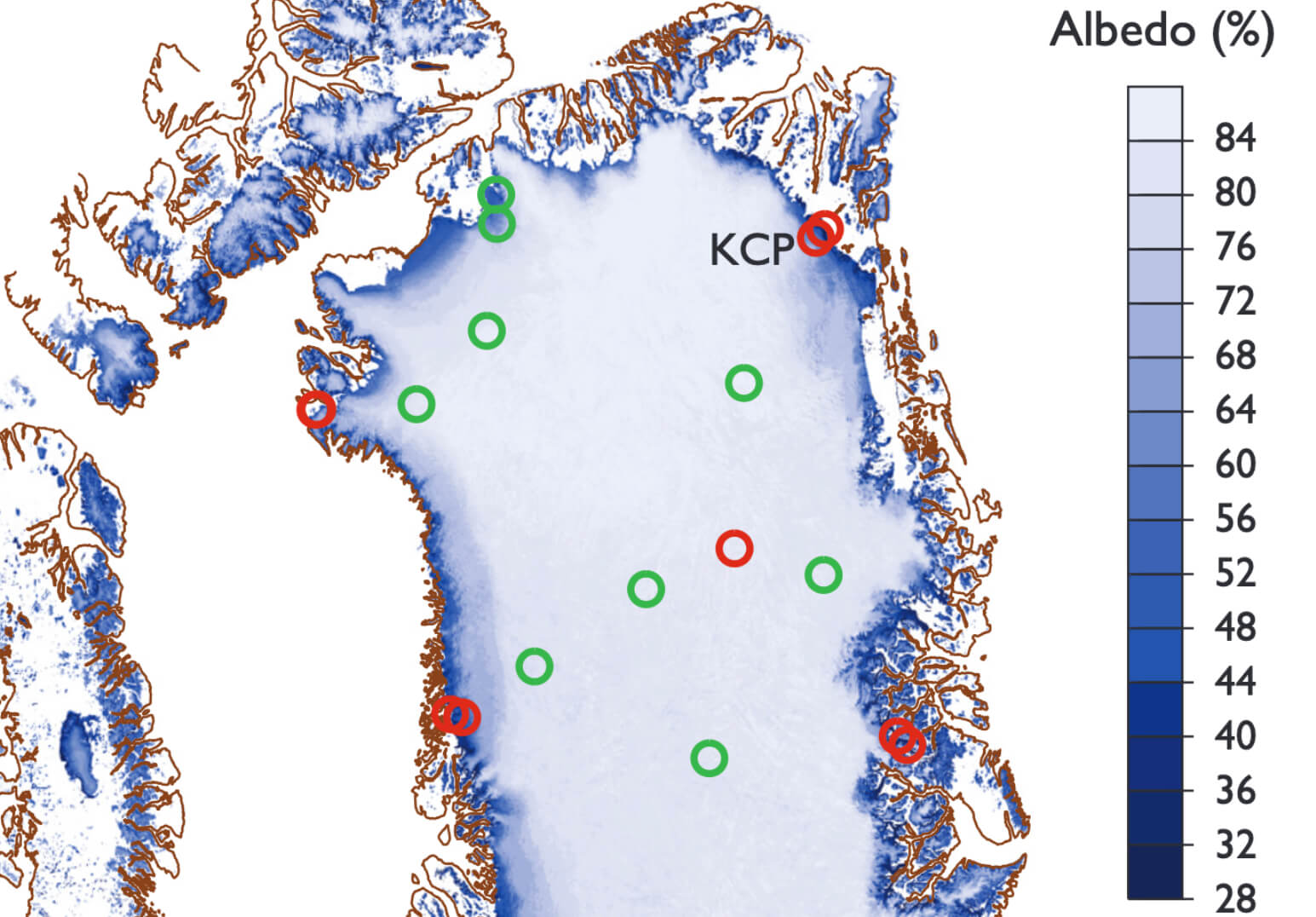
How to Cite
Share
Abstract
Albedo, Latin for ‘whiteness’, is a term used to describe the amount of sunlight reflected by the ground. Fresh snow albedo can exceed 85%, making it among the most reflective natural substances. Warm conditions promote snow crystal metamorphosis that, like the presence of liquid water, bring snow albedo down below 65%. With the darkening, caused by the metamorphosis, absorbed solar energy thus increases by roughly a factor of two. Seasonal snow melts over the lower reaches of a glacier leading to the exposure of bare ice with albedo below 55%. Impurities such as dust, black carbon or microbes can bring glacier-ice albedo below 30%, meaning that snow ablation gives way to impurity-rich, bare glacier ice which increases absorbed sunlight by more than a factor of three.
How to Cite
Share
Downloads
Editors Adam A. Garde and Ole Bennike
The 17 contributions in this Review of Survey activities reflect the wide range of activities currently performed by the Geological Survey of Denmark and Greenland, commonly in collaboration with external partners.
Topics in and around Denmark include the important Danish potential for geothermal energy, a shale gas [...]










